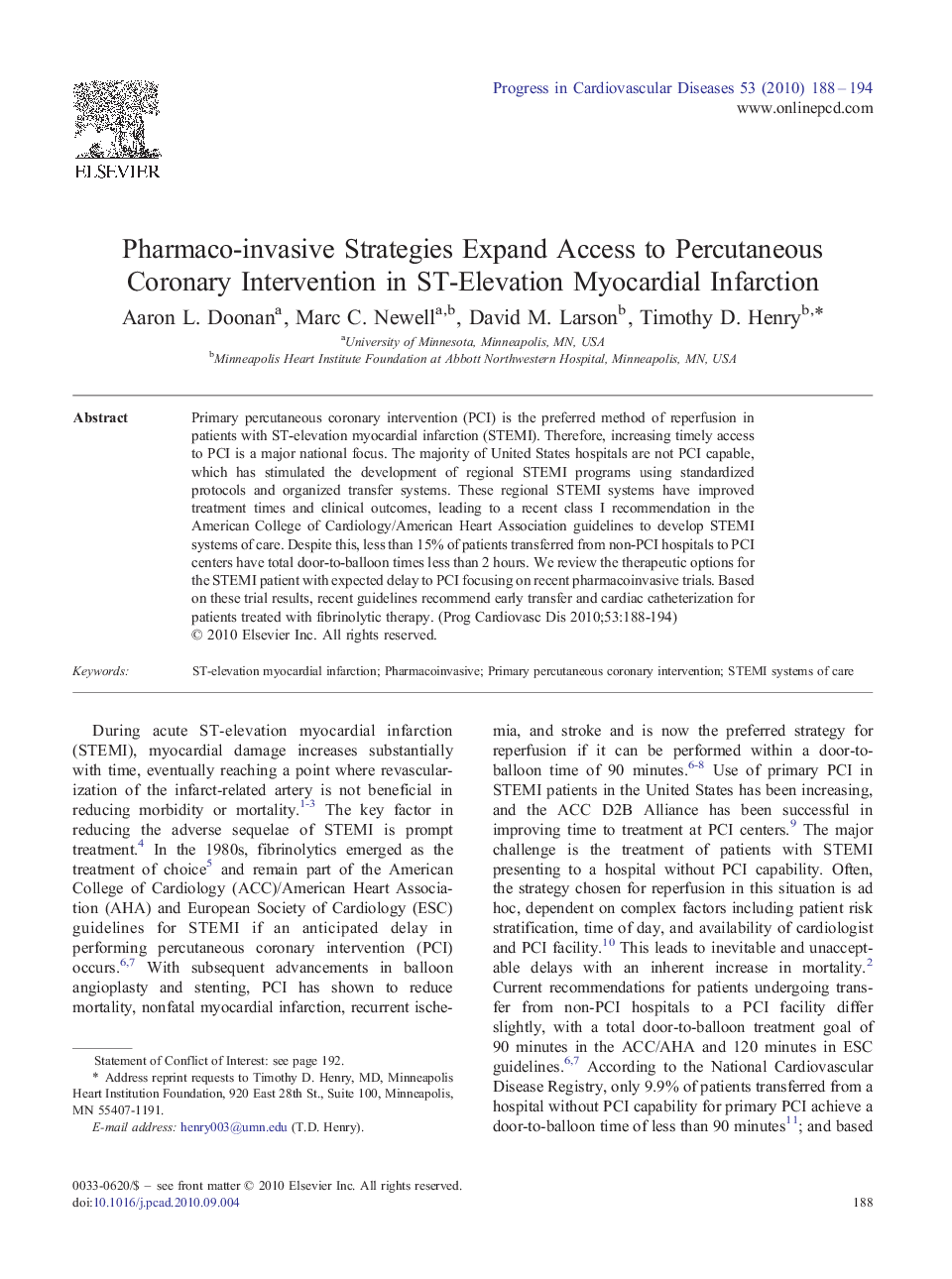| Article ID | Journal | Published Year | Pages | File Type |
|---|---|---|---|---|
| 3006844 | Progress in Cardiovascular Diseases | 2010 | 7 Pages |
Primary percutaneous coronary intervention (PCI) is the preferred method of reperfusion in patients with ST-elevation myocardial infarction (STEMI). Therefore, increasing timely access to PCI is a major national focus. The majority of United States hospitals are not PCI capable, which has stimulated the development of regional STEMI programs using standardized protocols and organized transfer systems. These regional STEMI systems have improved treatment times and clinical outcomes, leading to a recent class I recommendation in the American College of Cardiology/American Heart Association guidelines to develop STEMI systems of care. Despite this, less than 15% of patients transferred from non-PCI hospitals to PCI centers have total door-to-balloon times less than 2 hours. We review the therapeutic options for the STEMI patient with expected delay to PCI focusing on recent pharmacoinvasive trials. Based on these trial results, recent guidelines recommend early transfer and cardiac catheterization for patients treated with fibrinolytic therapy.
